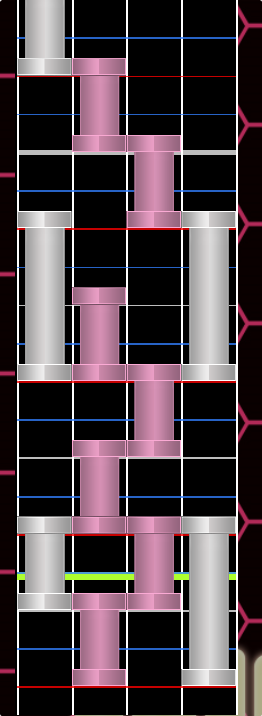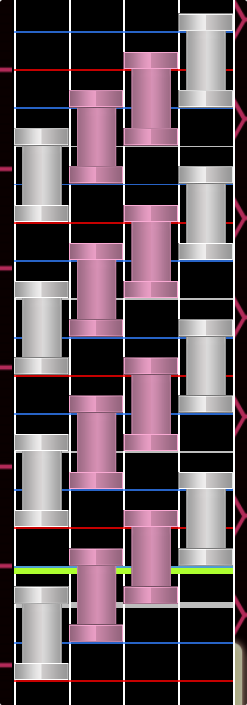So a common interpretation of inverse is where blank spaces are replaced with hold notes, and holds notes are replaced with blank spaces. That's fine and all, but I think thats kinda vague. Let me show why.
I believe inverse has less to do with blanks being notes and notes being blanks, and more with how much the keys are spent being held vs released. Something like release duration is < 1/3 than the duration LN before and after it.
#1 - Most of you would say that this is definitely inverse
All releases are much smaller than holds here. It's impossible to argue this is not an inverse pattern.

All releases are much smaller than holds here. It's impossible to argue this is not an inverse pattern.
#2 - But would a pattern like this be inverse as well?
Here no release is shorter than a hold. Arguably if the pattern is fast it plays like an LN stream, and if the pattern is slow it's just an LN heavy pattern.

Here no release is shorter than a hold. Arguably if the pattern is fast it plays like an LN stream, and if the pattern is slow it's just an LN heavy pattern.
#3 - What about this pattern?
Some players may say these inverse rolls, but honestly I think these would play like graced chords if anything.

Some players may say these inverse rolls, but honestly I think these would play like graced chords if anything.
I believe inverse has less to do with blanks being notes and notes being blanks, and more with how much the keys are spent being held vs released. Something like release duration is < 1/3 than the duration LN before and after it.